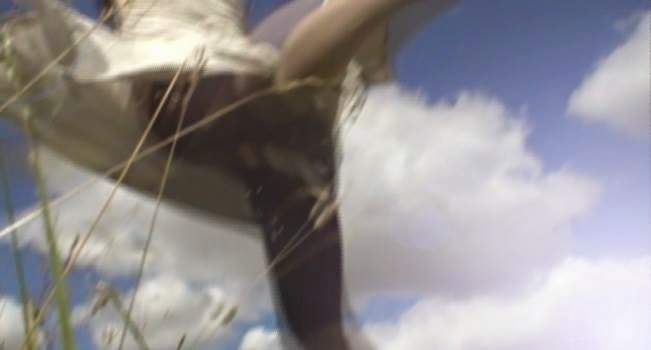The human body is made up of approximately 70% water. We loose water by sweating and breathing during physical exertion. Water is an important part of our body it is important that we replace water that we lose from our daily activites by increasing our fluid intake.
It's important to keep well hydrated throughout your day and is essential when engaging in any type of physical activity such as running or dancing. The duration of your exercise sessions, heat, humidity and sweat produced are all major factors to consider when keeping your body in proper fluid balance.
Dehydration impairs your physical performance as you only need to loose 2% of your body weight as fluid for your performance to become noticeably impaired.
Hydration Tips:
- Start hydrating early. Drink a glass of water when you first get up in the morning
- Take a water bottle with you and sip all day long to maintain body temperature
- Drink before you get thirsty. Thirst is a sign that your body is already dehydrated
- Try sipping at least half a pint of water 30 minutes before physical activity
- Replenish lost fluids by sipping water every 15 minutes during physical activity
- Continue to drink water even if you think you have quenched your thirst
- Only drink fruit juices after a hard workout, it can help with re-hydration and replenish glycogen
- Don't forget to drink water when engaged in physical activity in cold weather. You still lose fluid it's just not as noticeable
Sweating
Sweating occurs when your body temperature rises 0.5 degrees above normal you will loose water, in the form of sweat. It evaporates from the skin taking the heat with it. Without sweating, your body would overheat and would eventually collapse from heat exhaustion.
Fluid Replacement
Replace the water lost through sweating during physical activity but be aware individuals loose water at different rates so some may need to drink more than others.
However here are general guidelines for hydration during physical activity:
- Drink 500ml (2 - 3 glasses) of water 30 minutes to one hour before your physical activity
- Drink 200ml (1 - 2 glasses) of water every 20 minutes during your physical activity
- Drink at least 500ml (2 - 3 glasses) after your physical activity
Signs of Dehydration
Checking the colour of your urine is a good indicator as to your level of hydration:
What about Sports Drinks?
Water is recommended as it is easily absorbed. Sports drinks that have selected levels of carbohydrates and electrolytes are created to maintain fluid levels and prevent fatigue. This can enhance performance by fuelling the muscles during exercise. Research has shown that a solution containing electrolytes and carbohydrates may help to retain fluids consumed after prolonged intense exercise.
CAUTION: Be careful not to confuse sports and energy drinks, sport drinks do not contain caffeine but do contain water, carbohydrates and electrolytes (generally sodium and potassium) to provide energy and aid hydration. However, energy or performance drinks have a variety of supplements and often stimulants that dehydrate you. Always read the label and evaluate the safety like you would any other supplement. If there is more than 10% of sugar it is an energy drink not a sports drink.
How to Stay Hydrated - Things to Avoid!
Avoid Too Much Caffeine
Consuming too much caffeine and high sugar energy drinks is not the best idea during physical activity because they actually slow down the rate of fluid absorption.
Caffeine is found in:
- Coffee
- Tea
- Energy drinks
- Colas
- Fizzy drinks
Avoid Alcohol
Alcohol acts as a diuretic and will increase water loss. Drinking too much alcohol, especially on a regular basis, can increase the risk of health problems. It is a poor fuel source and has a very slow rate of metabolism. If you drink alcohol before physical activity your judgement will be progressively impaired, physical performance will be badly affected as there is a loss of co-ordination. Do not drink alcohol after physical activity as it doesn't replace fluid loss and can prevent the refuelling of your glycogen stores. Be aware a hangover reduces your endurance ability the next day.
WARNING: Avoid drinking alcohol for 24 hours after muscle or soft tissue injury. Drinking large amounts of alcohol may increase swelling after injury and hinder the repair process.
Hot Weather
Exercising during hot weather will result in extra fluid loss leading to dehydration. Try to avoid dehydration, heat stress and poor performance by adequate fluid replacement during your summer physical activities. Remember only a small degree of dehydration will cause a decrease in performance, which arises in the late stages of your physical activity when performance is most important. Dehydration contributes to fatigue and thirst is a poor indicator as it is a late signal of severe fluid loss so it is important to replace fluids throughout physical activity.
Disclaimer: The information contained on this web page is intended as general guidance and information only. Laurastanyer.co.uk and its authors accept no liability for any loss, injury or damage however incurred as a consequence, whether directly or indirectly, of the use this information. All advice on this web page should only be used under the supervision of a qualified dance / fitness / healthcare professional.




































